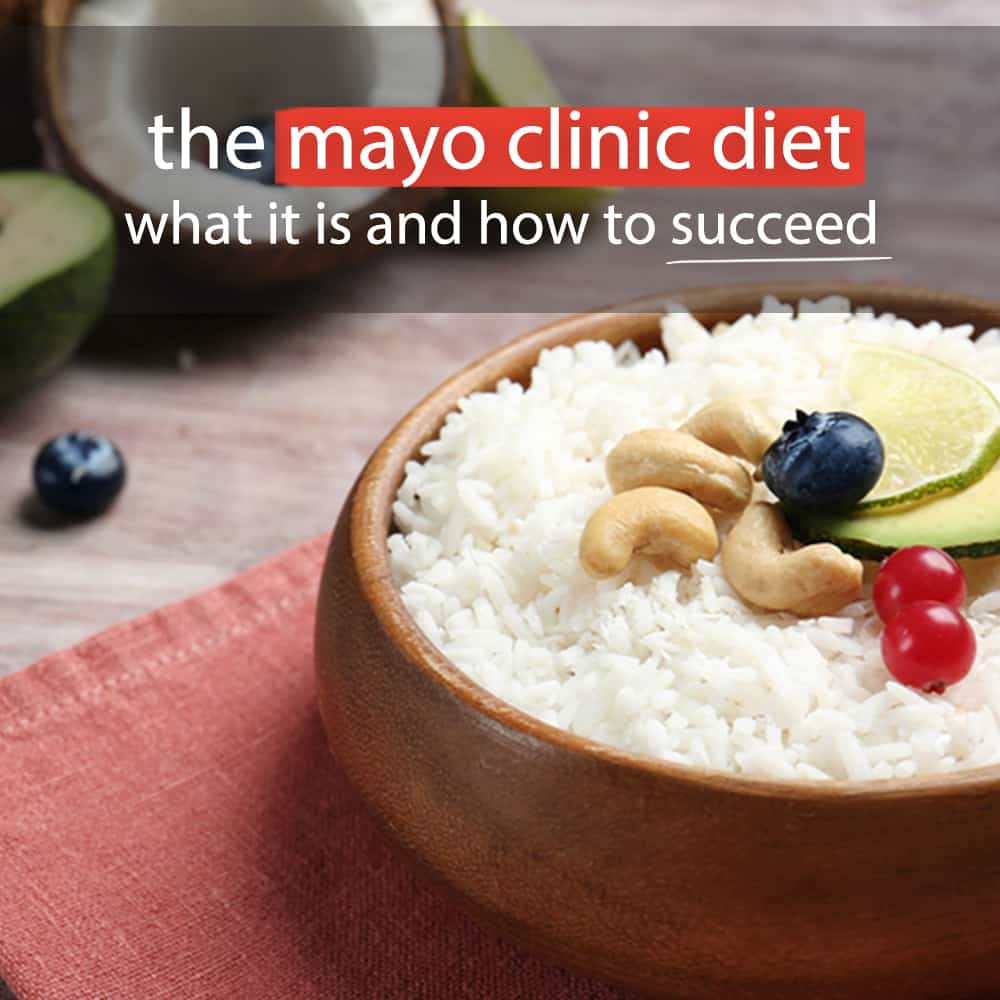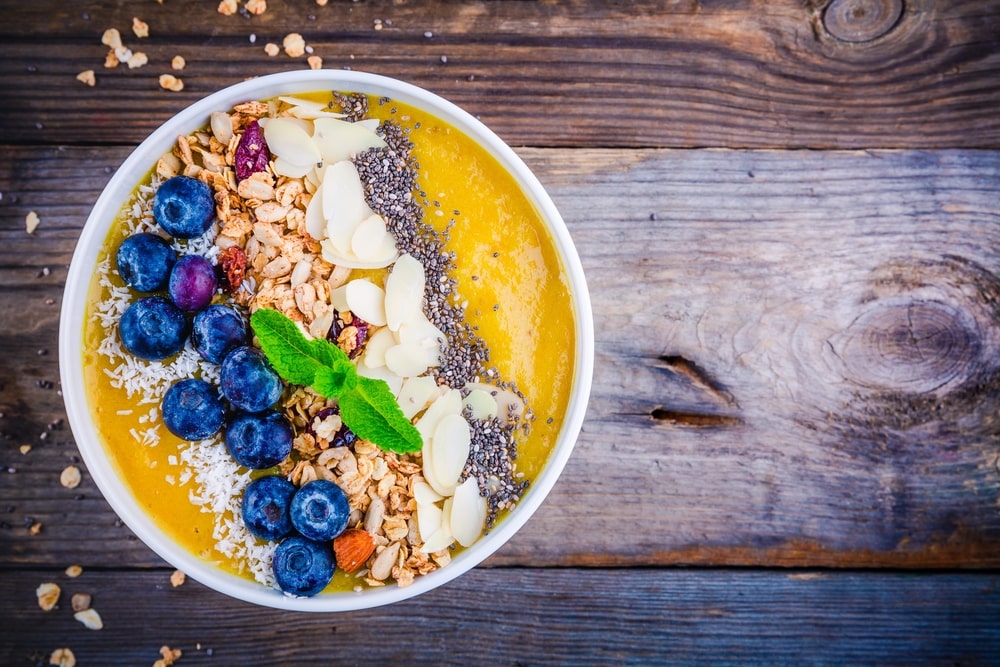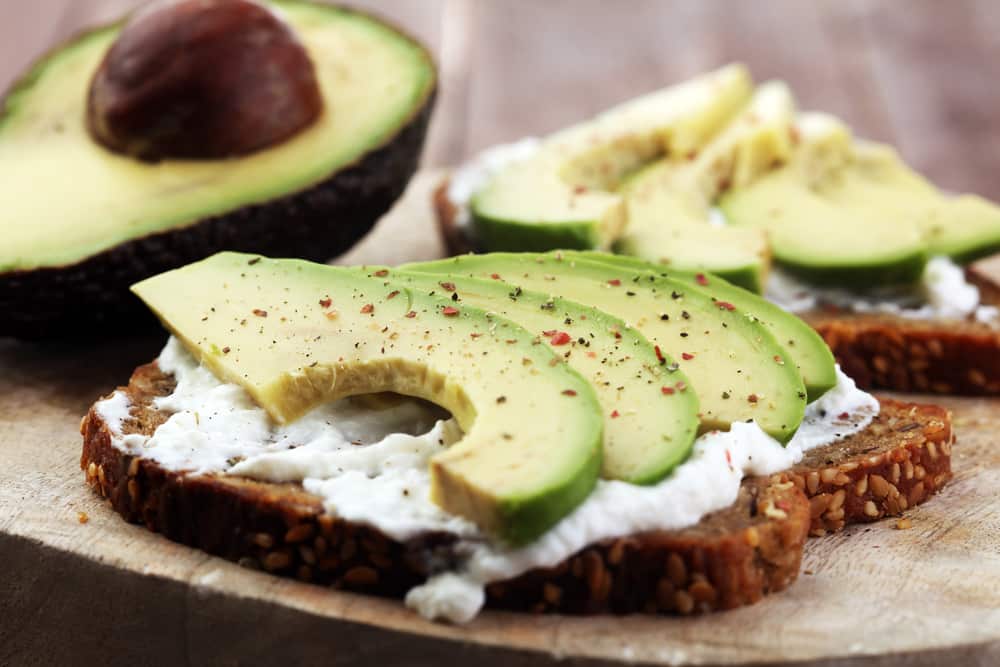You’re about a diet away from giving up. Nothing ever works. Every time you try to eat healthy and start exercising, the whole thing falls apart. One doughnut, and it’s all over. Again. Losing weight, eating right, exercising — it’s all too much. But it doesn’t have to be. If you’re feeling burned out and betrayed by a dozen diets gone sour, you just haven’t tried an effective, credible diet that works yet. If that’s what you’re looking for, you might want to consider giving The Mayo Clinic Diet a try next.
The Mayo Clinic Diet is ranked No. 4 on the U.S. News & World Report’s list of best diets, and for good reason. Instead of trying to help you lose massive amounts of weight quickly — which usually ends in weight regain not long after a short-term diet ends — it teaches you how to transform healthy habits into a healthy lifestyle that lasts forever.
Let’s take a closer look at what makes this diet one of the best. The experts don’t lie — you’re going to love the results you’ll get. It’s a diet that’s simple to follow, and you won’t even have to give up the foods you know and love. We’ll even provide a one-day sample menu to show you how easy it is.

What is the Mayo Clinic Diet?
The Mayo Clinic Diet is not your stereotypical fad diet. Created by experts affiliated with the Mayo Foundation for Medical Education and Research, this diet is an evidence-based approach to adopting healthy habits for life. What does that mean? It means this diet isn’t going to tell you to do something that doesn’t work. Mayo claims this is “the last diet you’ll ever need,” claiming that if you follow the resources you’re given, eating healthy will stop feeling like a diet and start feeling like normal life.
The Mayo Clinic Diet can be beneficial for a number of reasons
Benefits
- Heart health. On the Mayo Clinic Diet, you are encouraged to eat plenty of fruits and vegetables, complex carbohydrates (e.g., whole grains), protein, and healthy fats, all common recommendations for maintaining a healthy heart.
- Weight loss. This diet will help you develop healthy habits and provides the tools that will help you choose better foods and prepare healthier recipes. As long as you follow the guidelines, weight loss is a given.
- Blood sugar control. Eating excess refined sugars, discouraged on the Mayo Clinic Diet, can lead to blood sugar spikes. Skipping snacks and meals can cause blood sugar levels to drop to dangerous levels. You will learn healthy eating habits that have positive side effects, like keeping your blood sugar in check.
Above all, this diet is fairly simple to follow. There are no long lists of rules or detailed lists of “approved” and “unapproved” foods. You have a lot of freedom to make this diet work for you, your preferences, your schedule, and your budget.

Guidelines
Unlike many diet programs out there, the Mayo Clinic Diet and all its resources are free. Tools offered include recipes, sample menus, tips, and even a downloadable iOS app that can help you keep track of your habits, make better choices, and see how you’re improving. All you have to do is sign up for a profile and you’re cleared to get started.
Once you set up your free profile, you begin the first of two phases of the Mayo Clinic Diet. Don’t worry: the rules aren’t going to take over your life. In fact, you’re probably going to learn more about healthy eating and exercise in the first phase of the diet than you thought you ever needed to know. Let’s go over how these two phases work.
Phase I: Lose it
As the title implies, the first phase of the Mayo Clinic Diet focuses on positive habit-forming and its resulting effects on weight loss. During this phase, you will typically lose anywhere from 6 to 10 pounds over a two-week period (results differ with every person). This is a much healthier, safer, and more realistic approach to weight loss than diets that tell you losing 10 pounds in a week is effective long-term. It’s still not an easy feat to achieve.
However, Mayo doesn’t just give you a list of “good” and “bad” foods and send you out into the wilderness to fend for yourself. The diet actually teaches you to pinpoint and work on overcoming your diet-sabotaging habits. You’ll learn to develop new, healthy habits to replace the old, less healthy ones — a positive weight loss approach you’ll come to love.
Phase II: Live it
Now that you know the best techniques and strategies for losing weight and living healthfully, it’s time to really put your knowledge to good use. During this life-long phase, you will continue to lose one to two pounds per week on average until you reach your goal weight. You’ll use everything you learned in the first phase of the diet, plus a continued abundance of resources, to maintain a healthy weight and continue living as healthy of a life as possible.
This isn’t a diet that has a fixed endpoint. It’s meant to teach you how to apply everything you learn to your everyday routine. Health isn’t a one-week expedition you return from after a set time frame: it’s a journey that lasts a lifetime.
The Mayo Clinic Healthy Weight Pyramid
The Mayo Clinic Diet’s healthy eating and activity guidelines are based on the Mayo Clinic Healthy Weight Pyramid. This looks a little like the now outdated Food Guide Pyramid, except it’s arranged with the foods you should eat the most on the bottom (fruits and veggies). It also combines Protein and dairy and separates healthy fats from sweets, an important distinction to make when choosing the right meals and snacks to incorporate into your day.
These are the pyramid’s groupings:
- Fruits and vegetables
- Physical activity
- Carbohydrates
- Protein/Dairy
- Fats
- Sweets
The idea is to eat more foods from the base of the pyramid and fewer from the top. Therefore, fruits and vegetables should make up the majority of your diet, while sweets should make up a very small portion of your daily calories.

Starting a new diet is hard, because it likely involves eating a variety of different foods you might not typically eat every day. Healthy eating also involves cutting back on the amount of processed foods you eat, which can be difficult because of how addicting these foods can be. Therefore, it can be helpful to have a sample menu in front of you to give you an idea of what a day on a new diet might look like.
Here is a one-day sample menu you might follow on the Mayo Clinic diet. Keep in mind that you can still follow this diet if you have dietary restrictions, such as food allergies. This is a diet that can be modified to suit a number of dietary circumstances. This is just an example; feel free to tweak it where you see fit (as long as it still follows the rules!).
First thing
Black coffee or tea, no milk, sugar, artificial sweeteners, or cream
Daily physical activity
Don’t forget to exercise for roughly 30 minutes to get your heart pumping!
Breakfast
Water or tea (no milk, cream, sugar, artificial sweeteners)
Black coffee
1/2 cup oatmeal made with 1 cup milk, with fruit, nuts, or raisins
1/2 cup fruit, such as berries, melon, or 1/4 banana
Morning snack
Greek yogurt with 1/2 cup fresh fruit
Lunch
1 flatbread pizza with sauce, cheese, red and green peppers, olives, spinach
Green salad with spinach leaves, croutons, cheese, tomatoes, carrots
Afternoon snack
1 cup celery with 2 tablespoons hummus dip
Dinner
3 oz. grilled chicken breast
1 cup quinoa or brown rice
1/2 cup green beans
1/2 cup mashed sweet potato
Dessert: 1 cup cubed fruit, 1 ounce dark chocolate
Evening snack
8 wheat crackers with fresh cheese and a hardboiled egg

Tips for success on the Mayo Clinic Diet
If you have tried a number of diets before, and have yet to find success, the root cause may be in your habits, not the diet itself. While the Mayo Clinic Diet incorporates positive habit-forming into its program, here are a few quick tips to help you succeed no matter what.
- If you are hungry, eat. Dieting does not mean you have to be hungry.
- Choose a variety of healthy snacks so you don’t get bored eating the same thing over and over again.
- Make grocery lists and plan your meals ahead of time to stay on track.
- If you know you will be tempted to eat a certain food you want to stop eating, don’t buy it.
- Instead of rewarding yourself with food, celebrate your weight loss by planning a relaxing staycation.
Don’t give up on your hopes of losing weight and being an overall healthier person. The key is to change your mindset. This may be a diet, but it’s more of a positive lifestyle change. Self-improvement, making changes in your life, it’s a process. Take your time, set goals, celebrate your wins, and figure out how to prevent and come to terms with setbacks. This isn’t always easy, but you can make it happen.


